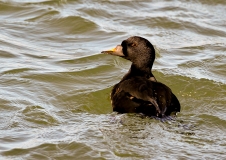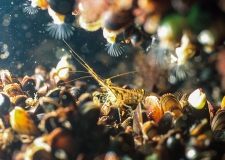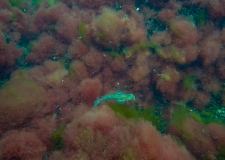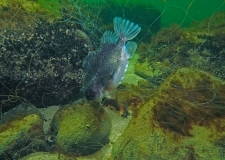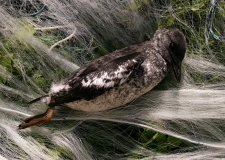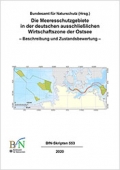The Pomeranian Bay – Rønne Bank Nature Conservation Area
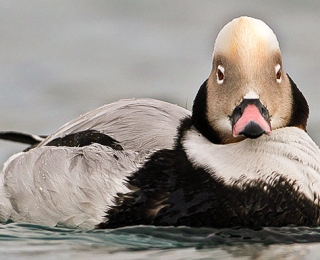
Facts Pomeranian Bay – Rønne Bank Nature Conservation Area
|
Natura 2000 site placed under national protection as an NCA in 2017 |
||
|
Fact sheet |
HD site HD site HD site SPA Pomeranian Bay |
|
|
Habitat types |
Sandbanks |
approx. 567 km² |
|
Reefs |
approx. 175 km² |
|
|
Species/Numbers |
Harbour porpoise (Phocoena phocoena) population of the central Baltic Sea |
Overwintering and migration habitat (total population in central Baltic Sea only about 500 individuals) |
|
Grey seals (Halichoerus grypus) |
Used as migration and feeding habitat |
|
|
Twait shad (Alosa fallax) |
Recorded |
|
|
Baltic sturgeon (Acipenser oxyrinchus) |
Recorded; reintroduction possible. (See: Wiederansiedlung des Störs) |
|
|
Long-tailed duck (Clangula hyemalis) |
100,000 in winter (2013) |
|
|
Red-throated and black-throated diver (Gavia stellata, Gavia arctica) |
3,000 in spring (2013) |
|
Pomeranian Bay – Rønne Bank complex area
The Pomeranian Bay – Rønne Bank Nature Conservation Area is a complex area, where different protection regimes border on each other or overlap in some cases. This area unifies the European Natura 2000 sites protected by the Habitats Directive (HD) and the Birds Directive (BD). The individual sections corresponding to a HD site or bird protection area (SPA - Special Protection Area) are described as (sub)areas in the Protected Area Ordinance for this complex area.
The HD subarea Western Rønne Bank is denoted as Area I, the HD site Adler Ground as Area II, and the HD site Pomeranian Bay with Odra Bank as Area III. The Pomeranian Bay SPA corresponds to Area IV and overlaps with Areas II and III.
